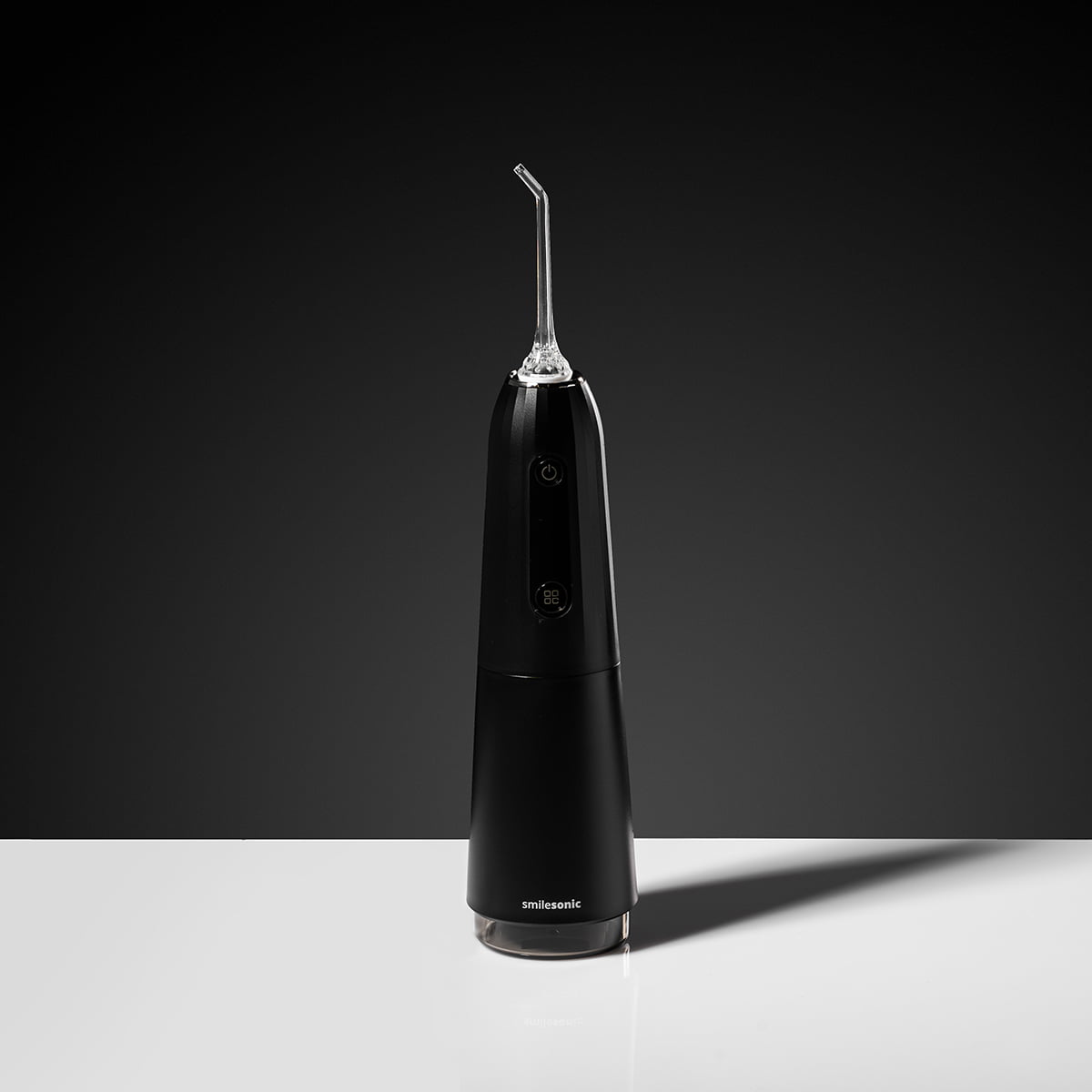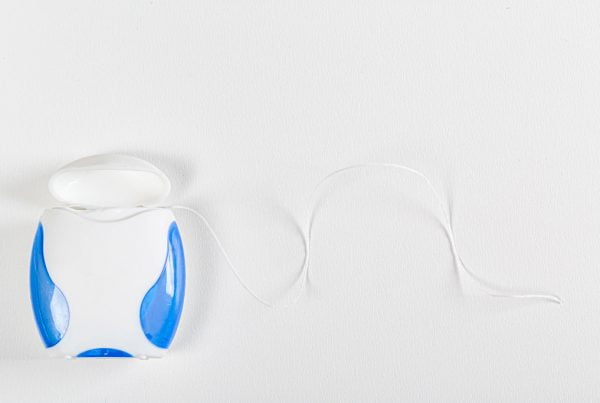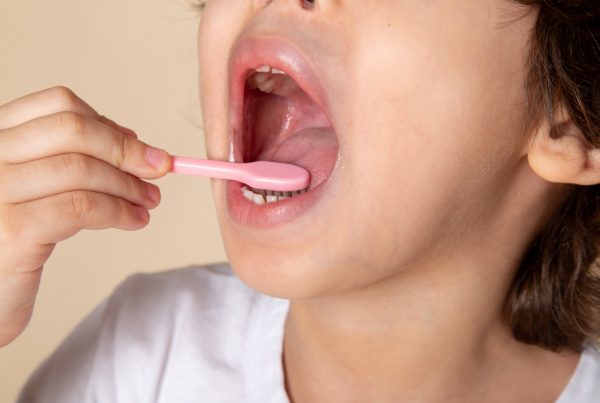Rough teeth after brushing – what does a rough dental deposit mean and how to prevent it?
Smooth teeth after brushing are the result we all expect from daily oral hygiene. However, sometimes, despite brushing, the teeth may feel rough to the touch. This sensation can be temporary, caused by poor brushing technique, or long-term, indicating health or hygiene problems. It is worth understanding what a rough deposit on teeth means, what its causes are, and how to deal with it.
Causes of rough deposits on teeth and what is tartar?
Rough deposits on teeth are a common problem, even among people who regularly care for their oral hygiene. The causes of this phenomenon vary and may result from daily habits, diet, or natural processes in the mouth.
Plaque buildup
Dental plaque is a soft bacterial coating that forms on teeth due to bacterial metabolism. If not removed thoroughly during brushing, it can lead to a rough feeling. In hard-to-reach areas, such as interdental spaces, deposits accumulate even faster.
Dental tartar
Tartar is mineralized plaque formed under the influence of calcium and phosphorus ions in saliva. It has a rough surface and is difficult to remove with home methods, making teeth feel coarse. Over time, it can reach deeper areas, including tooth roots.
Hard water
Water rich in minerals, especially calcium and magnesium, may cause these substances to settle on the surface of teeth. Hard water can contribute to the formation of a rough layer, similar to scale on faucets or dishes.
Toothpaste residue
Incomplete rinsing of the mouth after brushing may result in leftover toothpaste on teeth. When dry, it may create a rough feeling, especially in areas that were not rinsed thoroughly.
Food residue
Some foods, such as tea, coffee, red wine, or dark fruits, may leave deposits on teeth. Over time, these deposits may turn into a stubborn layer that causes roughness. This also affects those who consume a lot of sweet or starchy foods, which encourage food residue sticking to teeth.
Enamel demineralization
Tooth enamel is naturally smooth, but exposure to food acids or bacteria may cause mineral loss, leading to demineralization. This process makes the tooth surface rough and prone to damage. Those who consume a lot of acidic products are particularly susceptible.
Poor oral hygiene
Incorrect brushing techniques, brushing for too short a time, or skipping interdental areas are common reasons for deposits remaining on teeth. Inconsistent hygiene also promotes plaque and tartar buildup.
Low saliva production
Saliva plays a key role in naturally cleansing teeth and preventing deposits. When the mouth is dry due to dehydration, stress, or medication, this self-cleansing mechanism is disturbed, leading to roughness.
Environmental pollution and habits
Smokers or users of tobacco products are more prone to rough deposits. Tar substances from tobacco smoke easily stick to the tooth surface, forming stubborn coatings.
Genetic predispositions
Some individuals may be more prone to plaque and deposits due to saliva composition, enamel structure, or other genetic factors. These cases require special attention to oral hygiene.
Roughness of teeth and oral hygiene
Tooth roughness is often associated with the level of oral hygiene. Plaque buildup from improper brushing and skipping interdental spaces can lead to a rough feeling. Not removing plaque regularly leads to tartar formation, which has a coarse texture.
Poor brushing technique or brushing for too short a time also increases the risk of residue. Regular and thorough oral hygiene, including the use of dental floss and mouthwash, helps keep teeth smooth and free from deposits.
Health problems related to rough teeth
Rough teeth may indicate health problems or inflammations developing in the mouth, which, if ignored, may lead to serious diseases. One of the most common issues is plaque buildup, which turns into tartar, promoting tooth decay, gum disease, and periodontal inflammation. Rough surfaces allow bacteria to stick more easily, increasing inflammation risk.
Loss of tooth smoothness may also result from enamel demineralization, the first stage of tooth decay, which manifests as sensitivity to cold, hot, or sweet foods. Enamel becomes weakened, and teeth are more prone to damage and hypersensitivity. Over time, untreated decay leads to deeper cavities and root canal treatment.
Rough deposits may also indicate insufficient saliva, disrupting natural tooth cleaning. Dry mouth encourages bacterial growth, increasing the risk of cavities, bad breath, and infections. Long-lasting roughness should prompt a dental consultation to identify the cause and prevent more serious consequences.
Effective ways to remove rough enamel deposits
Rough deposits may feel uncomfortable and indicate neglected hygiene or early health issues such as plaque or tartar. These may appear on both outer and inner tooth surfaces. Keeping teeth smooth requires proper hygiene techniques, diet, and regular dental visits.
Daily oral hygiene
- Daily oral care is the foundation of preventing and removing rough deposits. Regular brushing and using additional methods are key to smooth and healthy teeth. Brush for at least two minutes.
- Brushing teeth. Brush at least twice a day for two minutes using fluoride toothpaste that strengthens enamel and supports remineralization. Use a soft-bristled toothbrush to avoid damaging enamel or gums. Use circular or sweeping motions to clean surfaces thoroughly.
- Cleaning between teeth. Rough deposits often gather in spaces that a toothbrush cannot reach. Use dental floss or an irrigator to remove plaque and food from these areas. Interdental brushes can also be helpful.
- Mouth rinsing. Use antibacterial mouthwash to reduce bacteria causing plaque and deposits. Choose alcohol-free products to protect the mucous membranes.
Regular dental visits
- Professional dental treatments are essential when deposits cannot be removed at home. Regular checkups help maintain oral health.
- Scaling. A dental procedure that removes hard tartar – the main cause of rough teeth and gum inflammation.
- Teeth sandblasting. This procedure removes surface stains and buildup not removable with a toothbrush. It polishes the teeth, restoring smoothness and a clean look.
- Fluoride treatments during visits strengthen enamel and reduce the formation of deposits, increasing acid resistance.
Proper diet
- Diet plays an essential role in preventing rough deposits. Foods can support or harm dental health.
- Limiting sugar. Sugar promotes bacterial growth responsible for plaque. Reduce sweets, sugary drinks, and high-sugar foods.
- Avoiding staining foods. Drinks like coffee, tea, and red wine, and foods with strong pigments may cause deposits. Rinse your mouth after consumption to reduce risk.
- Eating enamel-friendly foods. Include calcium-rich foods like milk, cheese, and yogurt, phosphorus-rich foods like fish and nuts, and vitamin D. These nutrients support enamel remineralization and a smooth surface.
- Drinking water supports natural cleaning by stimulating saliva, which neutralizes acids and helps remove food residue while maintaining mouth pH.
Oral hygiene products
Choosing the right products can help prevent and remove rough deposits.
- Remineralizing toothpaste. Toothpastes with fluoride, hydroxyapatite, or other enamel-strengthening ingredients rebuild smooth enamel. They are effective in early enamel demineralization.
- Sonic toothbrushes. These modern tools clean better than manual ones. Their rapid, precise movements thoroughly clean tooth surfaces.
- Sugar-free gum. Chewing gum stimulates saliva, neutralizes acids, and naturally cleans teeth. It’s a useful addition after meals.
Improving brushing technique
Poor technique may lead to deposits. Proper brushing requires gentle circular motions to clean teeth without damaging them. Avoid aggressive horizontal brushing that can create micro-damage to enamel.
Rough teeth – when to see a dentist?
Rough teeth after brushing may signal a need for a dental visit, especially if the sensation persists despite regular hygiene. It could indicate tartar buildup or other issues like early decay or gingivitis. If you also experience bleeding gums while brushing or sensitivity to heat, cold, or sweets, consult your dentist. Discoloration may also be a warning sign.
A dentist can help with professional treatments like scaling or sandblasting that restore smoothness. They may also apply fluoride to strengthen enamel and reduce future damage. A dental consultation is also a chance to detect cavities and prevent further issues. Regular visits help maintain oral health and reinforce good habits.
Summary
Rough deposits on teeth have various causes, including plaque buildup, poor hygiene, diet, or enamel issues. Although not always serious, ignoring them may lead to cavities, gum disease, or even periodontitis. Regular hygiene, proper dental care products, and dentist visits effectively manage this problem and ensure healthy teeth and gums.





